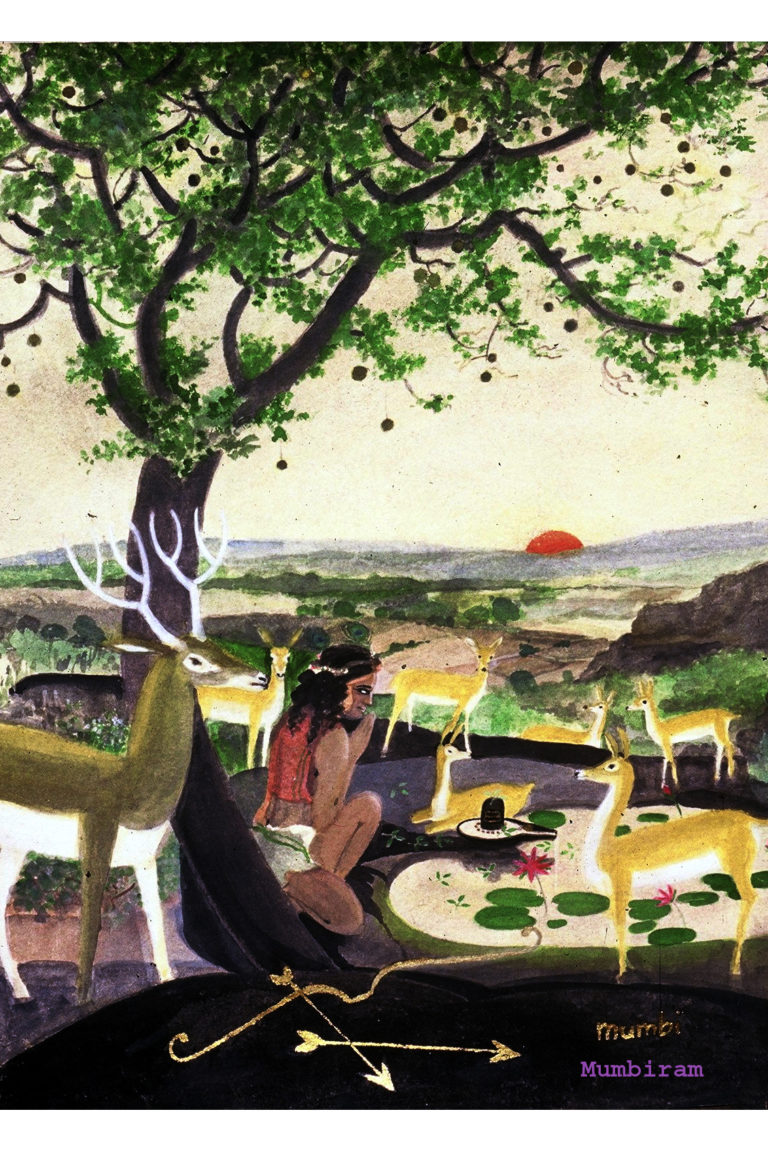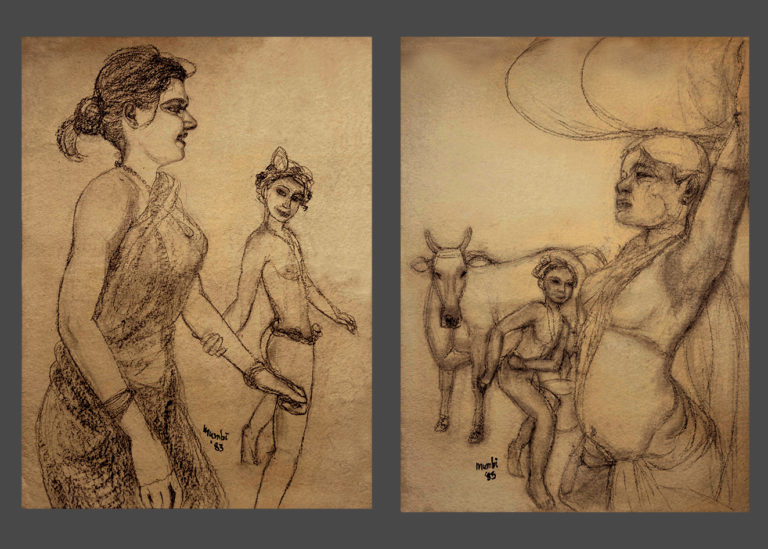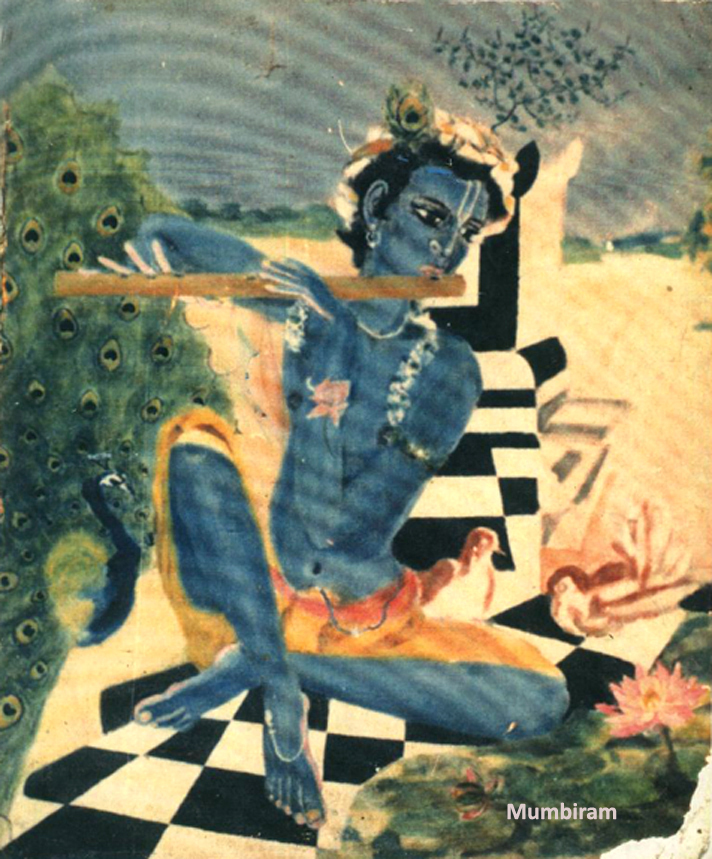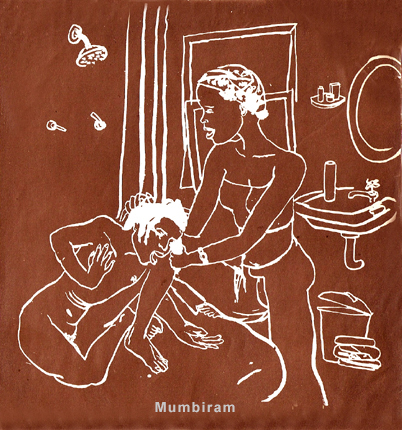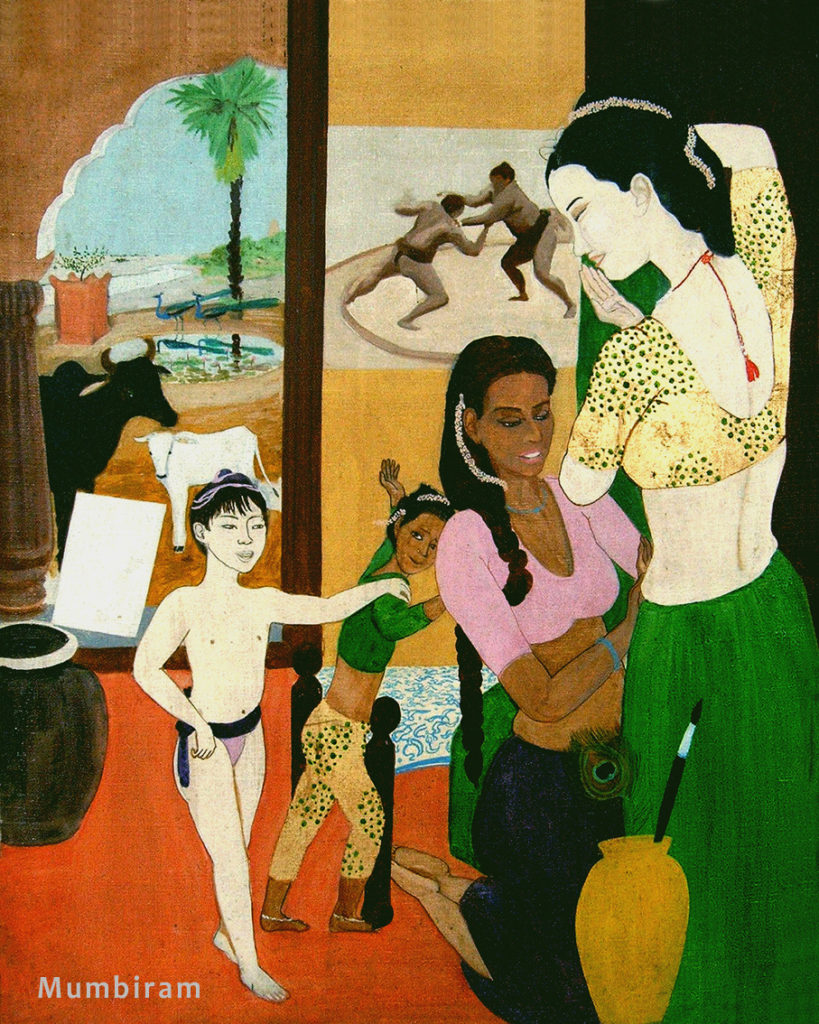
“Gokula at Mumbiram’s home on the bank of the Yamuna in Vrindavan” by Mumbiram, Oil on canvas, 1988, Japan
In this painting we are at Mumbiram´s favourite spot on the bank of the Yamuna. It is a happy scene in a home at the same spot where Mumbiram´s friend had made a temple. In the distance you see the Yamuna winding its way through the white sands of Vrindavan. A pair of peacocks has landed by the lotus pond in the middle ground. A solitary palm suggests the tropical mood. In the villages of India every home has a cow and a calf as symbols of peace, love and purity. Carved wooden pillars support the ornate canopy of the veranda. Red ochre is used to paint the Tulasi plant stands by the lotus pond as well as the walls of the canopies of the veranda. The red ochre earth is commonly used as paint in India. It is also added to the plastered floors. This is how a tastefully decorated interior and exterior of a traditional Indian home could look. A blank canvas is leaning against a pillar of the veranda. Here Gokula and Mumbiram live in a traditional Indian home. Gokula and Mumbiram have a little boy named after Balaram the elder brother of Krishna. Balaram was the best wrestler of his time. Little Bala loves the stories of Krishna and Balaram, as also sumo wrestling of Japan. Their neighbour is an Indian woman named Sunanda who has a daughter named Swati.
The warm feeling of sharing and rapport is most wonderfully depicted in this painting. It is an idealized world no doubt. It is a tribute to love between people that goes beyond cultural differences and causes a renaissance through the coming together of great ideals.
The five live as one family. Gokula designs beautiful clothes and Sunanda stiches them from fabrics that Mumbiram brings for them. These fabrics are rich in textures and colours. Mumbiram uses brilliant gold leaf in the gold brocade polka-dot blouse of Gokula. The same material is used for Swati’s pants. Bala is dressed like a wrestler. His clothes are from Sunanda’s fabrics. That is love in simple sharing ways. Gokula is learning how to wear a saree. The “poster” on the wall shows Sumo Wrestling, that great traditional art of Japan. The warm feeling of sharing and rapport is most wonderfully depicted in this painting. It is an idealized world no doubt. It is a tribute to love between people that goes beyond cultural differences and causes a renaissance through the coming together of great ideals.
